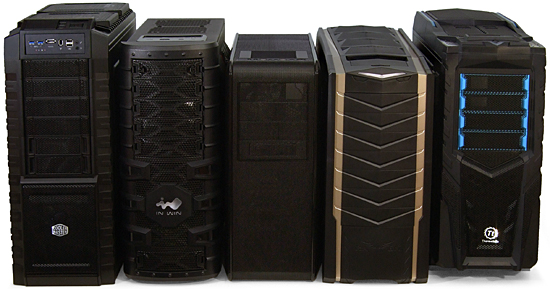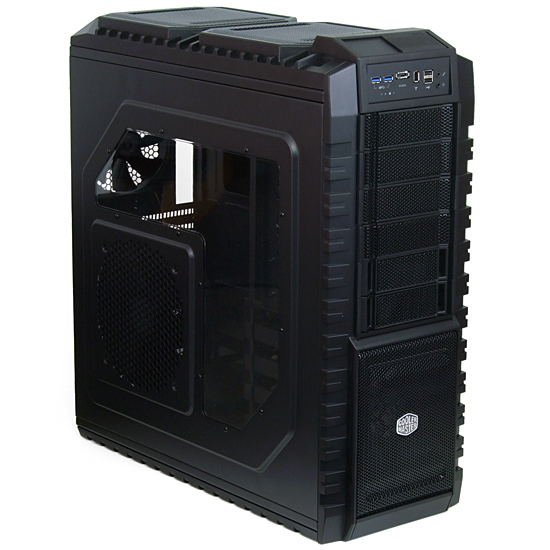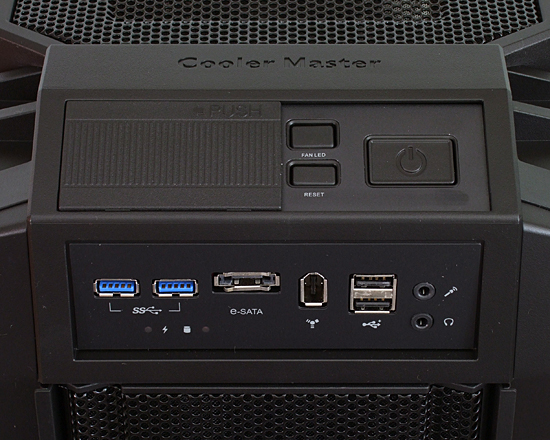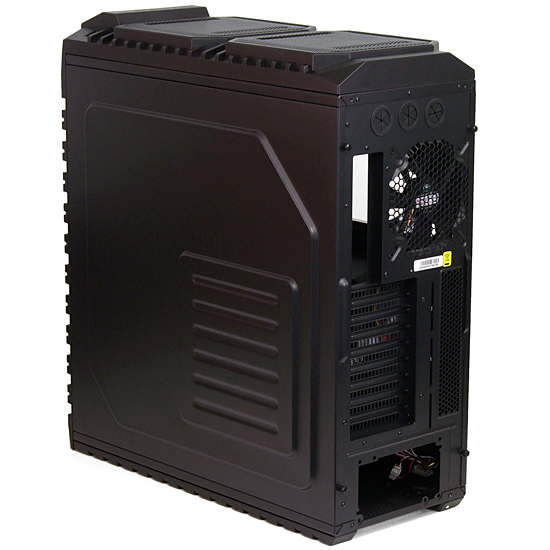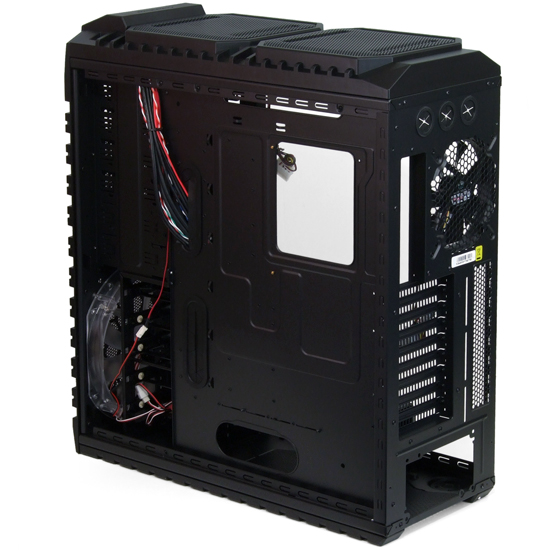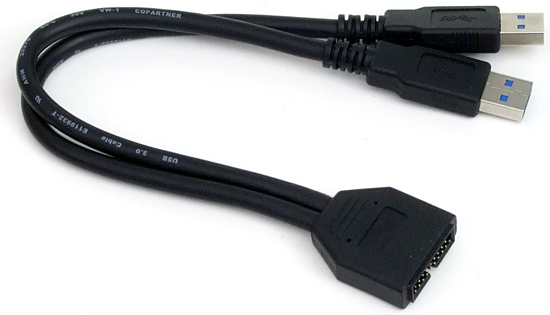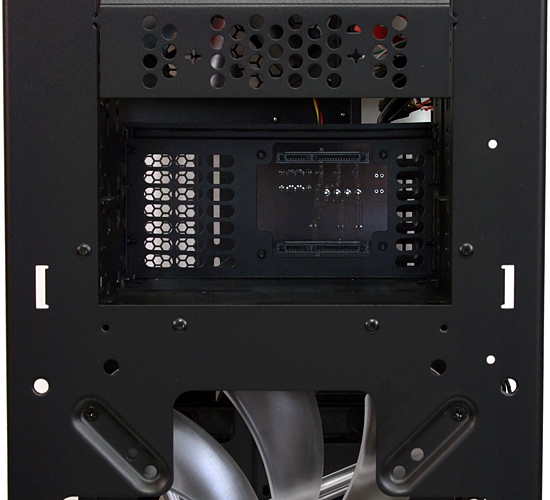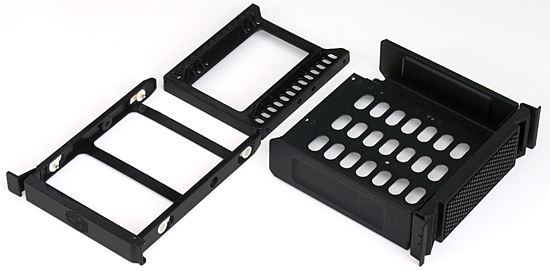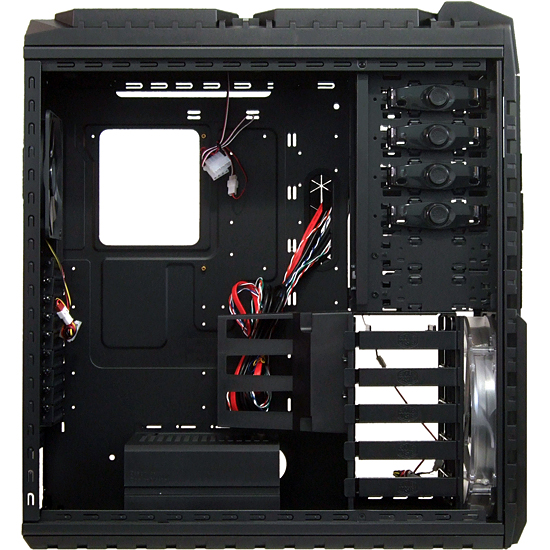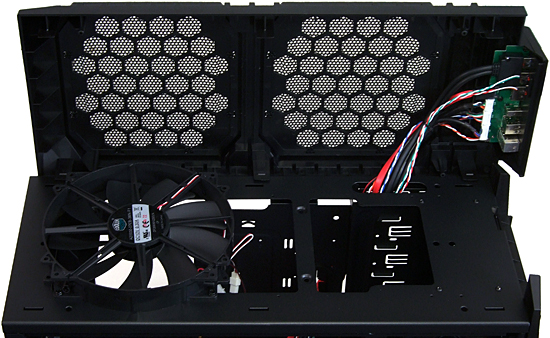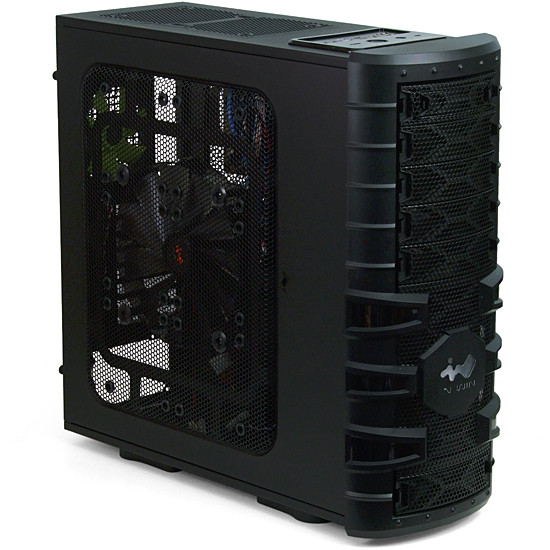In Pictures: Five Eight-Slot Cases For CrossFire And SLI
Do you need an eighth slot for a CrossFire or SLI setup? We look at five cases that solve the problem created when motherboard vendors put a PCI Express x16 slot at the bottom of an ATX-based platform and you try to install a double-slot graphics card.
A Taste Of What's To Come
Meet five enclosures able to take up to eight expansion cards. Who needs that much space? How about anyone with an ATX motherboard featuring a PCIe x16 slot in the seventh-slot position and three or more dual-slot graphics cards? These cases also incorporate design elements sure to attract more mainstream gamers, too.
Today we introduce the design elements of all five cases. We'll follow-up next week with a system installation and performance-oriented write-up.
Cooler Master HAF X
Cooler Master’s latest mainstream gamer creation mixes the height of a full tower with the drive capacity of a mid-tower, dedicating the leftover space to water cooling enthusiasts. An I/O panel covers the front of that extra space.
Something Old, Something New
Many case manufacturers have ditched FireWire ports as portable devices that use them get rarer. Buyers who still need a quick place to plug in their ancient digital cameras will be pleased to know that Cooler Master hasn’t forgotten them. But builders who hate dysfunctional ports will be required to find a motherboard that still has a corresponding controller. Cooler Master also covers its bases, as USB 3.0 chases eSATA to the rear panel of most systems.
Odd Holes?
Unlike the other cases in today’s overview, the HAF X has nine expansion slots and three external cooler line grommets. The third grommet would probably be most useful for passing-through USB 3.0 cables, which is required by motherboards that have no internal USB 3.0 interface. Similarly, the ninth slot hole is probably most useful for installing breakout plates.
Better Stuff
While most modern cases have a reasonable amount of room to stuff cables behind their motherboard trays, Cooler Master knows that some of those cables must go beyond the edge of that tray. Unlike several competing designs, the HAF X motherboard tray’s rolled edge faces forward to keep it from blocking the cable pathway.
USB 3.0 Done Right!
As the motivating voice behind the standardization of a USB 3.0 front-panel connector, this editor was thrilled to find that Cooler Master arranged its adapter in the right direction. The front-panel lead plugs directly into an internal header, and boards that don’t have that connector can still get rear-panel pass-through.
Get Tom's Hardware's best news and in-depth reviews, straight to your inbox.
Baby Got Backplane
The HAF X fills two of its 5.25” bays with removable 3.5” drive trays. Although these trays don't have handles on them to simplify drive removal, a backplane makes the task of plugging them in much easier.
SSDs Made Easy
The front-facing backplane trays support both 3.5” and 2.5” drives, and those who need to add a third SSD will find an adapter in one of the internal drive brackets. Screwless mounting is limited to 3.5” drives on the internal brackets.
Air Cooling For Some
A 230 mm front fan blows through the five-bay internal cage into a power supply cover and graphics card duct. The power supply cover works with most units to hide cables, but the duct requires graphics cards to be spaced exactly two slots apart. Those lucky enough to have a configuration that works with this duct will also find it has a 120 mm fan holder that can help increase air pressure at the card’s intake.
Liquid Cooling for Others
A strip of metal across the optional second top fan mount provides a place to secure dual 120 mm-fan radiators. Note that only a radiator of this length can use those holes, as there is no additional support between this 240 mm spacing. Two 120 mm fans can be secured to an installed radiator, and the case provides 2.3” between the motherboard and interior panel to support extra-thick cooling configurations.
In Win Dragon Rider
Value-driven case builder In Win has been trying to win over gamers with its Style collection for a few years. Combining the quality of its office-oriented legacy cases with the flair of its low-cost enthusiast models, the Dragon Rider is the pinnacle of that effort.
-
-Fran- I'm using the HAF 932 AMD Edition and it's just marvelous. It's the HAF-X in essence, but with lil' more red, lol.Reply
Anyway, all of those look like very good cases, but the HAF comes with lil' wheels; It's very practical when you're tweaking in a timely manner and have to move around the case a lot (around the house, that is). It's really heavy once it's fully installed and all. Do the others have lil' wheels as an extra accessory? I'm really grateful to that feature as it's also easier to move it and clean (have it at floor level).
Cheers! -
clownbaby why do case manufacturers insist on styling their cases like chunks of scrap metal off the battlestar galactica. Even Lian Li is trending away from sleek, stylish cases. We don't all want a piece sitting on our desk that tells office visitors we've just come from the comic book store.Reply
I do appreciate all of the advances in the internals of cases, but for god's sake make nicer looking cases. Not plastic/steel, ostentatious, led light blasting ugly. Do use aluminum, sleek simple lines, minimalist exterior designs and some adult taste. -
bystander ReplyWho needs that much space? How about anyone with an ATX motherboard featuring a PCIe x16 slot in the seventh-slot position and three or more dual-slot graphics cards?
It's also useful for those with 2 cards where the first 2 slots only have 1 extra slot between them and you are using 2 slot cards. i.e. Gigabyte ga-x58a-ud3r motherboard.
I wish more enclosures make it available. -
ikyung clownbabywhy do case manufacturers insist on styling their cases like chunks of scrap metal off the battlestar galactica. Even Lian Li is trending away from sleek, stylish cases. We don't all want a piece sitting on our desk that tells office visitors we've just come from the comic book store.I do appreciate all of the advances in the internals of cases, but for god's sake make nicer looking cases. Not plastic/steel, ostentatious, led light blasting ugly. Do use aluminum, sleek simple lines, minimalist exterior designs and some adult taste.Nicely said.Reply
-
master9716 LOOK TOMS. WE ALREADY KNOW U HAVE SOME BULLDOZER PROCESSORS TESTING IN YOUR LABS AS WE SPEAK SO STOP STALLING AND ATLEAST LET SOME INTERN LEAK SOME BENCHMARKS>Reply -
renz496 master9716LOOK TOMS. WE ALREADY KNOW U HAVE SOME BULLDOZER PROCESSORS TESTING IN YOUR LABS AS WE SPEAK SO STOP STALLING AND ATLEAST LET SOME INTERN LEAK SOME BENCHMARKS>Reply
:lol:
if you want tom's to release the benchmark ask AMD to release the processor now -
Lewis57 clownbabywhy do case manufacturers insist on styling their cases like chunks of scrap metal off the battlestar galactica. Even Lian Li is trending away from sleek, stylish cases. We don't all want a piece sitting on our desk that tells office visitors we've just come from the comic book store.I do appreciate all of the advances in the internals of cases, but for god's sake make nicer looking cases. Not plastic/steel, ostentatious, led light blasting ugly. Do use aluminum, sleek simple lines, minimalist exterior designs and some adult taste.Reply
My thoughts exactly. Although, due to the benefits these cases bring to the table and the fact that they aren't as costly as a Lian Li case, I may actually consider one to stick under my desk. Would love it if the ones with LED fans came with the ability to turn off the LED without turning off the fan. -
hardcore_gamer master9716LOOK TOMS. WE ALREADY KNOW U HAVE SOME BULLDOZER PROCESSORS TESTING IN YOUR LABS AS WE SPEAK SO STOP STALLING AND ATLEAST LET SOME INTERN LEAK SOME BENCHMARKS>I asked G man about Bulldozer...He said "prepare for unforeseen consequences"Reply
